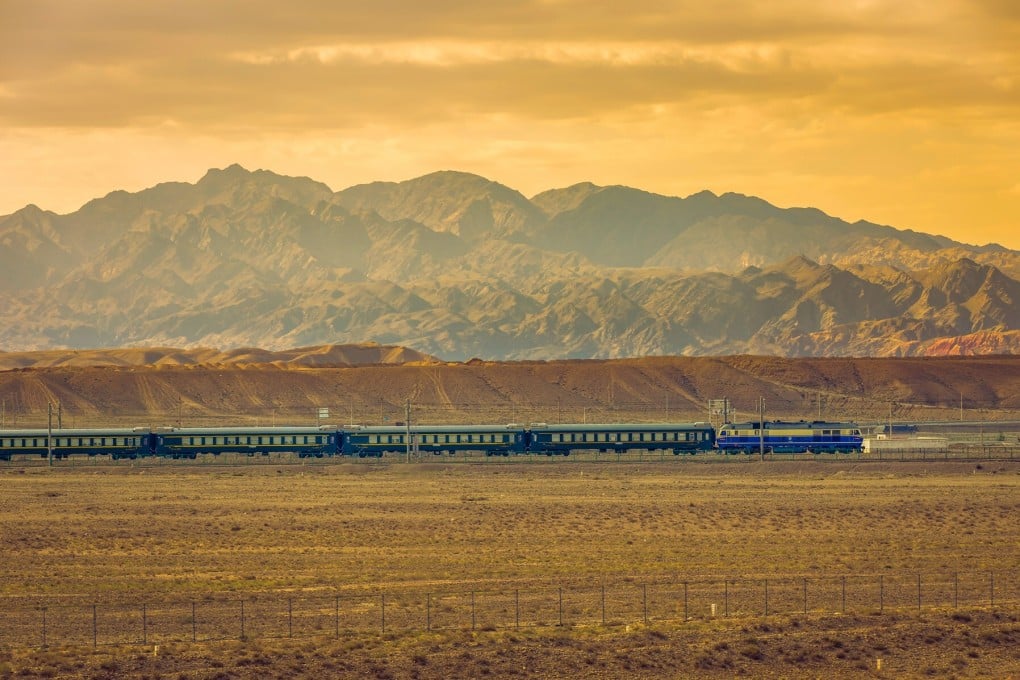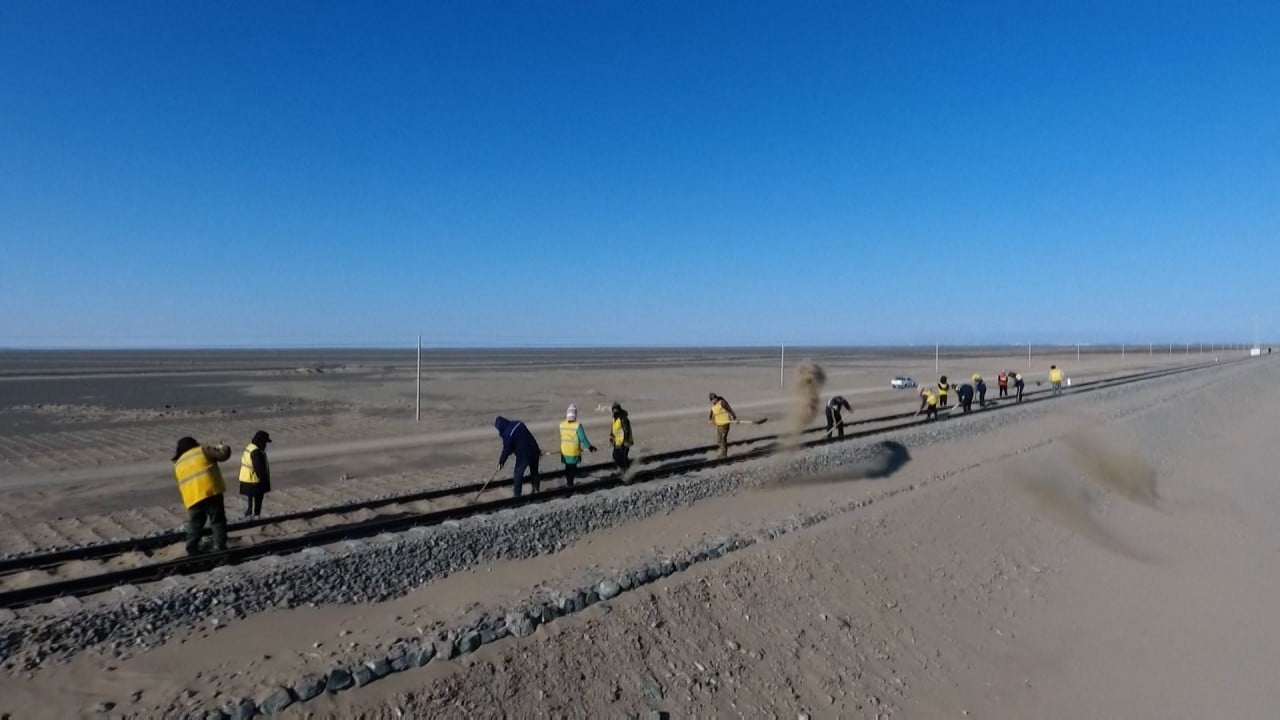Advertisement
Why China’s longest high-speed railway is slowing down
- The 1,776km Urumqi-Lanzhou line runs through the Gobi Desert, where severe sandstorms may be causing drag and damage to trains, a study finds
- Creative engineering to tackle the problem won’t come cheap, but money is just one of many considerations, a railway scientist in Beijing points out
Reading Time:4 minutes
Why you can trust SCMP
39

China’s first high-speed rail line across the Gobi Desert is slowing down, and the desert may be to blame.
Severe sandstorms could have seriously affected operations, a new study by Chinese scientists suggests, after travellers in recent years questioned the line’s bullet credentials.
The 1,776km line from Xinjiang’s capital Urumqi to Lanzhou in Gansu province – also the world’s longest high-speed railway – opened seven years ago. The track was built on a costly, ballast-free foundation able to remain stable at vastly different temperatures and allowing speeds of up to 350km/h.
However, strong winds carrying large amounts of sand could increase the drag on bullet trains by nearly a third, while causing serious erosion on the train body, windscreen and wheels, researchers led by mechanical engineering professor Jin Afang at Xinjiang University found.

01:26
Chinese workers on mission to ensure safety of desert railway
Chinese workers on mission to ensure safety of desert railway
The top speed was capped at 250km/h after the service launched in 2014. But in recent years, the speed in many sections had been reduced to 200km/h or below, prompting complaints from travellers that the railway – built at a cost of 143.5 billion yuan (US$22.5 billion) – did not live up to its name.
Advertisement